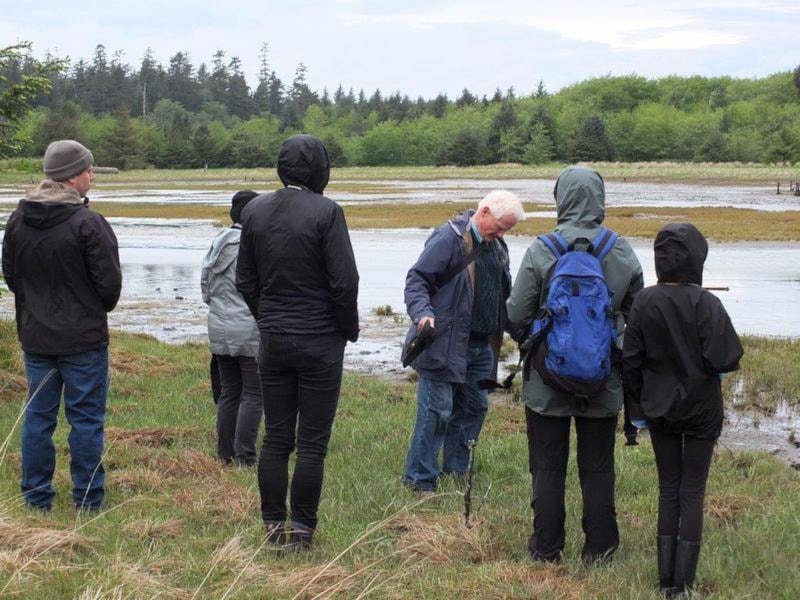By Margo Hearne
The songbird of summer is back. The first “whit” note of the Swainson’s Thrush was heard recently and now they are singing all over the place. Their upward spiralling song is a lovely addition to those long summer evenings and they even sing in the rain. Known locally as the “salmonberry bird” they feed their young with ripened berries.
We heard them on Monday during our “bird and muffin” walk in the sanctuary. A hardy group of ten people stopped, looked and listened to whatever was around. It was blustery and even a little chilly so we moved over to the Simpson Tower hoping for shelter. But it was definitely not a good idea as it was even more windy. A stroll through the trees softened the edges of the morning as did the hot coffee and baked goodies.
There were lots of birds around although they didn’t show themselves quite as noticeably as they have in past years. The Sandhill Cranes never appeared over the main meadow. It wasn’t until we heard their rolling, prehistoric call near the Stepping Stones Trail that five appeared and landed close by.
They were not deterred by our presence but carried on doing what cranes do — dance a little, chit-chat among themselves and feed on whatever was available. Often, at this time of year, there are up to 30 cranes strolling around and getting in the way of the nesting pair, which, I might add, take a dim view of the visitors. There can be some territorial noise before everyone settles down and gets along to get along.
Cranes eat most things, including frogs and small birds. They also eat the roots of Silverweed cinquefoil, digging them up and leaving a crane/silverweed “crop circle” in Delkatla! Silverweed is actually of the rose family: they have small yellow flowers and the undersides of the leaves are silvery. Wikipedia tells us that “The genus name of Silverweed, Potentilla, means ‘little powerful one’ as it survives trampling and, coupled with the soft texture of the leaves, led to them being stuffed into shoes to relieve and cool the sore feet of travellers, giving them alternative common names of ‘traveller’s ease’ and ‘traveller’s joy.’” Silverweed is also a medicinal so perhaps the cranes need whatever the plant has to offer when they get here.
Mud is also a medicinal. Or should I say, all the critters that live in mud provide rich pickings for all the birds that feed on the biofilm created by the decomposing material that drops into Delkatla daily. It’s a rich food combo of worms, crustaceans and fish and it’s all out there. Filamentous algae creates the biofilm and the whole matrix stores tons of “blue carbon,” a term coined by scientists to describe carbon dioxide stored in coastal plants and soil.
Also of interest on our walk last Monday was the high number of Tree Swallows. They sat on a low, dead, toothy snag and faced into the wind before rising again. Then a Peregrine Falcon flew in.
